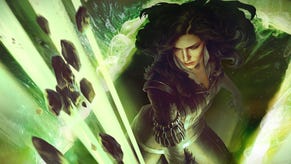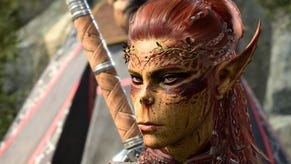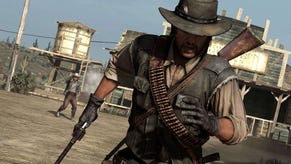Red Dead Redemption 2: does Stadia live up to its pre-launch promises?
An in-depth review of the platform's highest profile port.
The opportunity to take a closer look at Red Dead Redemption 2 on Stadia gives us the chance to expand on the tech review we posted earlier in the week. In our first piece, we looked at the high-end Stadia experience delivered by the controller/Chromecast Ultra bundle pack with 4K HDR 'Pro' subscription enabled. Red Dead 2 is fascinating because the nature of the experience changes very significantly if you don't have the premium sub in place. And remarkably, in some respects, it's actually an improvement.
But before we dive into the game, there are some bizarre oddities in running Stadia on my connection. I can download at 340mbps and upload at 34mbps - significantly better than the already stellar 200mbps hook-up used in Rich Leadbetter's test sessions. However, in Stadia, my connection is only rated as 'good' with a 33mbps download rate, while Rich's session was rated 'excellent'. Thankfully, I could rely on our existing Chromecast videos and bank my own 1080p captures.
And surprisingly, there is a big difference. You may think that the RDR2 experience is identical between Pro 4K and balanced 1080p modes, but that is not the case. On the former, RDR2 runs with a native resolution of 2560x1440 with frame-rate capped at 30 frames per second. In the balanced configuration, the game boots at 1080p instead, targeting 60 frames per second. There are obvious latency advantages to the higher frame-rate mode, offset by a lack of consistency in performance - and a hit to image quality. Fundamentally, not only is the game running at 1080p, it's using a lower bitrate feed too.
The concept of quality or performance modes being tied to system level display choices is one of the most frustrating things about a lot of PlayStation 4 Pro titles. Rather than being transparent to the user about what modes are available, the game chooses for you, leaving you completely in the dark about ways to play the game that you might actually prefer. It's not a great showing on the Pro and it's even more of a bad fit on Stadia. I mean, in this case, opting for the higher quality mode actually halves frame-rate. I really hope that Google updates its best practises for developers by insisting on quality/performance modes being selectable either at boot time, or within the game menu - something Stadia's impressive port of Shadow of the Tomb Raider seems to manage.
With Stadia bafflingly locking me out of the 4K streaming mode despite a surfeit of bandwidth, I relied upon Rich's captures taken during the main review process, and sourced my own 1080p grabs from the balanced mode. And it's here that we can see the quality difference delivered by the Pro subscription's higher bandwidth, especially in Red Dead 2's opening scenes, where the choice of content represents a huge challenge for resource-constrained video encoding.
The screen is packed with small and fast moving snow particles and it's very dark with soft moon lighting, meaning there are very soft gradients and changes in the lighting itself. In general, this means that the image is macroblocking rather often, showing very large box structures within the image in those areas devoid of particles, particularly in the dark areas of the image. Looking at the moonlight in the balanced version you are confronted with obvious colour gradient banding. It breaks the illusion that you are looking at a real-time rendered game - it's more like a playable YouTube video in some scenarios.
Compression works in many ways. One technique used is chroma sub-sampling, which manifests in RDR2's branding and UI, which are heavily dominated by the colour red. Due to the colour format, the video encoding turns all reds embellished against darker backgrounds into elements that are visually much lower quality than the rest of the image - they generally look half resolution.
Even the Pro 4K feed still has some video compression artefacts in the worst case scenarios - and the colour banding is still there. However, there's no doubt that the feed overall is a big, big improvement over the standard balanced mode. Macroblocking and banding in dark scenes are elements inherent to compressed video streaming so I am very curious how a game using a lot of dark hues and red will look - Doom Eternal should be an interesting test case. If the future of gaming has a heavy streaming component, I wouldn't be surprised to see artists shifting away from palette choices that don't play nicely with compression techniques like chroma sub-sampling.








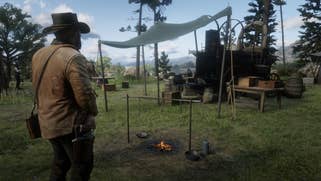
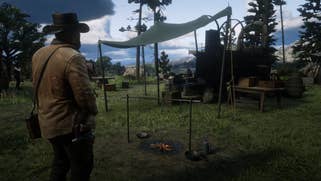
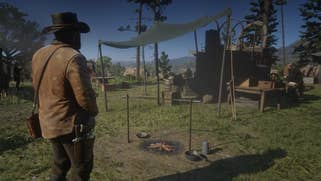
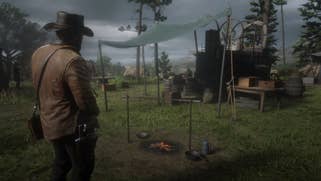
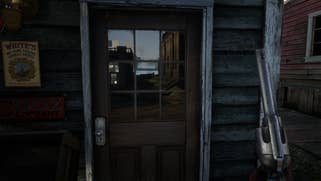

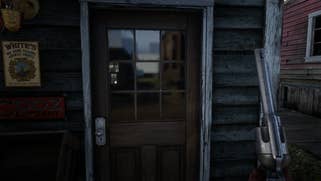

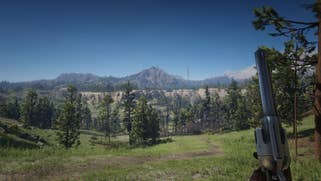

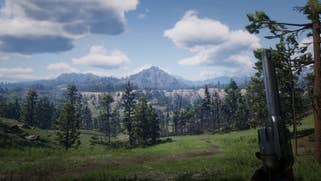
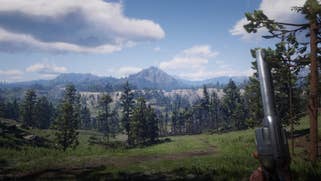


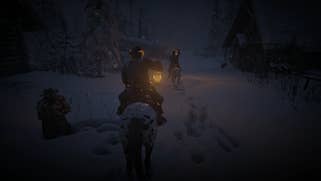
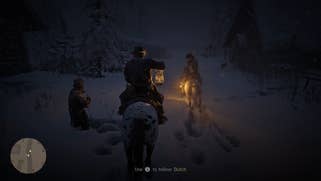
These image quality issues subside later in the game as you reach brighter-lit areas - though of course night time still presents issues. However, in these brighter areas, you get a better sense of how the 1080p feed compares to the PC version running at Xbox One X equivalent settings. I think the overall takeaway is that in stills, Stadia's 1080p output is a reasonable facsimile of the overall sharpness of the image in terms of edge detail. However, something seems amiss in terms of surface texture detail, where the game presents additional blur. It also seems to be the case that anisotropic filtering is very, very low in the Stadia port - lower even than Xbox One X's 4x. Again, the Pro subscription's 4K output is considerably better - but still no match for Xbox One X. Stadia's native 1440p plays X's 2160p then and the results are clearly less impressive, even without factoring in the video compression. The notion of a 10.7 teraflop AMD GPU delivering just 44 per cent of the native resolution of Xbox One X's six teraflop graphics core is rather baffling.
Did Rockstar double-down on higher-end rendering features of the kind seen in the PC version? Did it concentrate on quality of pixels over quantity? I spent the best part of a week carefully analysing every single graphics preset in the PC game when RDR2 launched, so it was relatively easy to revisit the 'big ticket' settings to see how the Stadia port accesses the range of visual options available from the 'unlocked' PC version.
Starting with lighting quality, the way moonlight shines at the beginning of the game makes it a match for PC's medium or Xbox One X's quality setting. Even though textures are lacking quality next to the native game running on a local machine (owing to compression and texture filtering), they do check out as running at the equivalent to PC's ultra, much like Xbox One X. In general, shadows exhibit the same high quality at close range tapering off to low at a distance. This is as close to Xbox One X as the PC port can get, but actually of a slightly higher quality overall than the console build.
The game's aesthetic is defined to a great extent by its volumetrics, and again, much like the Xbox One X game, this setting sits somewhere around the medium or low setting in the streaming version of the title. Even Stadia's reflection quality is set to a console-like low settings equivalent, where render-to-texture reflections in the game's windows fizzle and pop.
 Google Stadia Review: 4K Image Quality Analysis, Latency Tests. Is This Really The Future Of Gaming?
Google Stadia Review: 4K Image Quality Analysis, Latency Tests. Is This Really The Future Of Gaming?
The biggest surprise for me was actually the fact that the render distance for grass is once again a match for console settings. Even the tree level of detail setting - which hardly taxed resources on PC - is equivalent to Xbox One X settings in the Stadia stream. Finally, looking up close at tessellated features, this is similar in terms of distance and deformation to the high setting on PC. Fur quality is at the medium setting, just like Xbox One X, where the next step up produces a very different and more realistic-looking effect. The apparent lowering of anisotropic filtering apart, the big takeaway is that Red Dead 2 on Stadia follows virtually all of the optimised settings presets I put together for best performance on PC - and in turn, this is effectively a close a match as possible to Xbox One X's turnout.
Latency is a fascinating test and there are definite positives to this part of the story. I recently put together a deep dive analysis of Red Dead 2's input lag, with some eye-wateringly high results. Rockstar's priority in this title is on executing its sensational animation tech - which does mean that actions input into the game do take some time to eventually play out on-screen. So, for example, I found that the time taken from pressing the trigger to the gun firing on-screen was a remarkable 355ms on PC at 60fps with triple-buffering enabled, up against 435ms on Xbox One X. In equivalent scenes in Stadia's 1080p60 mode, the result is 385ms.
Stadia lag here is just 29ms slower than PC, and 50ms faster than Xbox One X. This is a classic example of how reducing game latency via faster frame-rates can compensate for the 'cost' of gaming via the cloud with all the lag that introduces. I did think that the 29ms measurement sounded rather familiar, and indeed, checking my latency to Google Cloud computers showed that sitting around 25ms. This suggests very streamlined processing from Google.
Of course, this latency advantage presumes a constant 60fps in order to keep control latency consistent - and having played through the first chapter and having played a bit further into the main game world, there is some disappointment. On the PC version, we noted that an AMD Radeon RX 580 could hit 60fps pretty consistently but despite its huge processing advantage, the Stadia GPU runs the game sub-optimally by comparison. You'll notice judder and extra input lag as a result. Alongside that, I also experienced a few moments of genuine stutter where the game would halt for a fraction of a second - the worst case presenting as a 200ms stutter. Thankfully, these episodes are rare.
Of course, Pro subscription users can switch to 'high visual quality' mode and drop down to 1440p at a capped 30 frames per second with higher bitrate video eliminating a lot of the less desirable compression artefacts. Performance is a lot more consistent as a result, though irregular frame-pacing can kick in - it seemed much more noticeable running around St Denis. And obviously, lag is higher too.
Ultimately, the Red Dead Redemption 2 port has left me somewhat puzzled. There are clear cloud advantages, you can't deny that. Boot-up time is fast and while in-game loading can still feel extended to say the least, it's a big improvement over the console versions. When the game hits its 60fps target in balanced mode, I do feel a clear advantage over the Xbox One X game in terms of response - I just wish that the video quality was better. I think the presentation would look fine on a smaller laptop screen and it certainly looks impressive on a smartphone, but I don't think it holds up for big screen play. Yes, you can switch to the Pro preset for a big improvement in overall quality, but then you're not playing at anything approaching 60fps any more. And I'll say it again but the notion of locking specific game modes to video output types (selectable only via the Stadia mobile app) is a really poor idea.
Perhaps there's something more we're not seeing behind the compression but from a technical perspective, Red Dead 2 on Stadia doesn't seem to be delivering on key marketing promises - certainly not the spirit of them at least. At the reveal, we were told that Stadia's GPU has the power of Xbox One X and PS4 Pro graphics combined, yet RDR2 on Stadia only has 44 per cent of the X's rendering resolution, while even the 4.2TF PS4 Pro GPU is generating a higher pixel-count (even before factoring in its checkerboarding upscale). Stadia's GPU seems to be an offshoot of AMD's RX Vega 56 based on its specs, yet in 1080p mode, performance is more in line with the PC version running on a much less capable RX 570 or RX 580.
This presents a problem for Stadia on two fronts. First of all, 4K support was promised for all launch titles and while we're getting a 4K output video format from the Chromecast Ultra, I do feel it's a stretch to describe this as an ultra HD experience. The small print on the Stadia website explains things more correctly, but even the "up to 4K" claim is still problematic when a title like Destiny 2 runs at 1080p instead. For my money, the Pro sub is still a clear upgrade as it's the only way to get 5.1 surround sound, HDR and image quality that looks a lot better on the big screen owing to its higher bitrate.
Obviously, it's still early days for Stadia. We don't know what conditions developers have to work within at launch and nor are we aware of other aspects that may explain what's going on - such as driver performance, for example. Meanwhile, it's only fair to point out that the kind of lower than expected performance seen in Red Dead 2 and Destiny 2 doesn't apply to the whole line-up. For example, the Shadow of the Tomb Raider port seems to demonstrate a much healthier turn-out for the Stadia hardware, and we hope to investigate this situation more deeply by looking at much more of the launch line-up soon.




